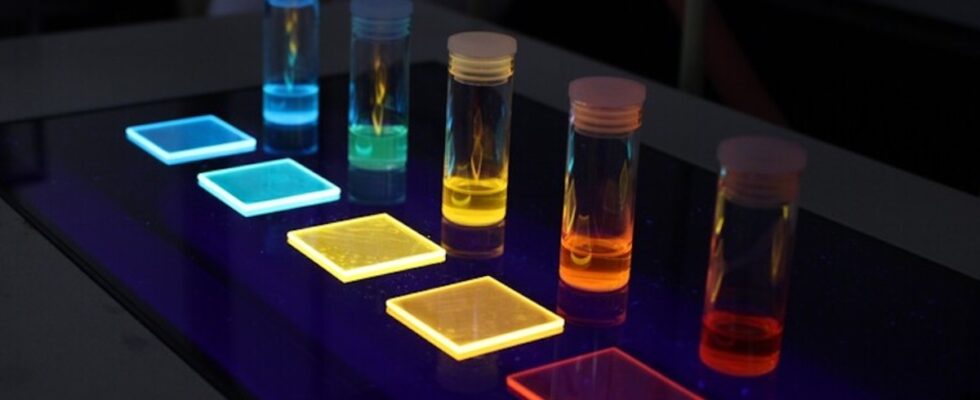Universal Display (UDC) promises 100% conversion of electricity to light through the use of phosphor for the blue sub-pixel.
LG Display and Samsung Display are currently evaluating the technology developed by Universal Display that allows the use of a phosphorescent blue OLED (PHOLED) sub-pixel instead of the fluorescent blue OLED sub-pixel currently used by the entire market. ‘industry. Oled screens, including televisions, already use phosphorescence for red and green, but blue remains fluorescent. Universal Display (UDC) emerges as the most likely supplier of phosphorescent blue (PHOLED) due to its years of research and patents in this field.
Mike Hack, vice president of Universal Display (UDC), told the Korean newspaper ETNews :
“Switching blue OLED from fluorescence to phosphorescence can increase luminous efficiency fourfold. […] We plan to mass-produce them from 2024″
LG Display is currently producing WOLED (white Oled) panels with four sub-pixels and above all a new microlens filter that boosts brightness (see the LG 65G3 test) while Samsung Display is producing QD-Oled panels with organic diodes fluorescent blue filters and quantum dot filters for red and green.
We don’t have a clear idea of the impact that using a phosphorescent blue sub-pixel would have on the overall brightness peak. UDC claims that its phosphorescent emitter offers 100% conversion of electricity into light compared to only 25% for its fluorescent equivalent. However, the blue sub-pixel is not the biggest on LG Display panels for example. The impact will therefore be limited, but will still improve energy efficiency.
It’s still unclear whether the blue PHOLED will be ready for mainstream Oled TVs in 2024. The launch schedule ultimately depends on LG Display, Samsung Display, and other panel makers. The two Korean manufacturers are currently reviewing this new technology. We could see the first prototypes during CES 2024 with a commercial launch the following year.
In the meantime, with the arrival of the new Oled Meta panels and their microlens filter, Oled televisions have made a big leap in terms of brightness. We measured peak brightness at 1460 cd/m² in Filmmaker mode on the LG 65G3 versus 998 cd/m² for last year’s LG 65G2 and 1101 cd/m² on the Panasonic 65LZ1500, the brightest OLED TV to date. ‘here. The QD-Oled models (Sony A95K and Samsung S95B) are content for the moment with a peak brightness of around 1000 cd/m², but the new Samsung S95C could do a little better (around 1300 cd/m²).
LG 55G3
Introductory price 2599 €

Note Digital

 Iacono
Iacono2,609.00
 Amazon Marketplace
Amazon Marketplace2,660.00
 Ubaldi
Ubaldi2,689.00
 Cdiscount Marketplace
Cdiscount Marketplace2,689.00
 baker.com
baker.com2,690.00
 Son-Video.com
Son-Video.com2,690.00
 La Redoute Marketplace
La Redoute Marketplace2,690.00
 Fnac.com
Fnac.com2,699.00
 LG Electronics
LG Electronics2,699.00
 Darty.com
Darty.com2,738.00
How the pricing table works
Disable your ad blocker to access all the links above.
LG 65G3
Introductory price 3590 €

Note Digital


(1)
 Iacono
Iacono3,489.00
 Son-Video.com
Son-Video.com3,590.00
 Amazon Marketplace
Amazon Marketplace3,590.00
 Rakuten
Rakuten3,590.00
 Ubaldi
Ubaldi3,590.00
 Fnac.com
Fnac.com3,599.00
 LG Electronics
LG Electronics3,599.00
 Darty.com
Darty.com3,638.00
How the pricing table works
Disable your ad blocker to access all the links above.
